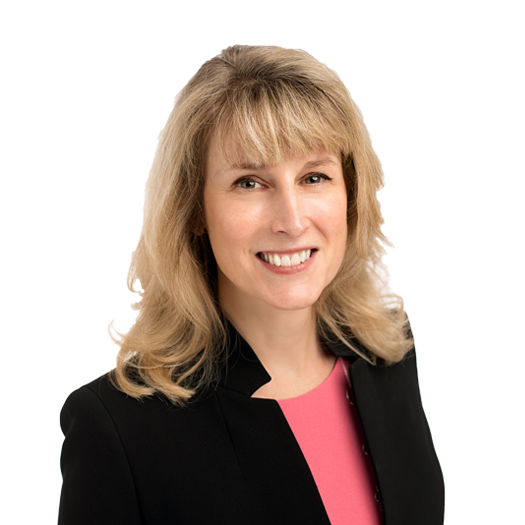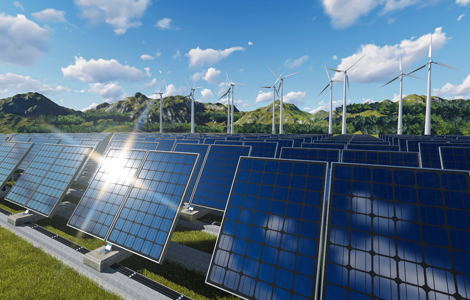From Orgis Energy’s website:
Energy Triangle: Pressure and Possibility
When making decisions about generation, utilities today are looking to balance three imperatives that form the generation triangle: affordable, reliable, and clean.
The Generation Imperative Pressure
Lyons set up the conversation with a historical perspective of utilities. For many years, the primary and often only considerations for a generation portfolio were affordability and reliability.
“We planned the system according to least-cost principles, and obligation to serve, and regulators set rates, you had interveners that complained about the rates, and it was a pretty straightforward kind of interaction to helping the lights stay on. And that produced low-cost, reliable power for a long time,” said Lyons.
Over the past two decades, Lyons says, consumers (both residential and commercial) began asking for a third imperative: clean. And there is some amount of tension in meeting the requirements of all three imperatives. The more imperatives there are, the harder it becomes to meet them all.
Transmission Pressure
Adding to the pressure on the electricity grid, the characteristics of wind and solar are different than that of many of the plants currently being retired like coal or nuclear, according to Lyons.
“It’s not to suggest that intermittent resources can’t be reliable, particularly when paired with other sources of power. For instance, solar and batteries make a great combination,” said Lyons. “The challenge is the grid wasn’t designed for a system that is largely based on renewables. So, transmission, think high voltage, big power lines, that can span multiple counties, states, even regions, they are critical to enabling those intermittent resources to connect into the grid and supply load, because those resources, think big wind, aren’t typically located right next to big cities.”
Lyons suggested this means a very big investment in transmission infrastructure is necessary.
“We have invested progressively less in transmission over time. And everyone’s now realizing, holy cow if we’re going to connect these kinds of resources to the loads that need them, we need big wires, and we need them soon. They are very, very difficult to build. Planning, siting, and cost allocation are all very difficult challenges on the transmission side, but they are critical to enabling the renewables we need in the mix.”
Eyman added that in a fossil-based plant system, the power plants tend to be near population centers and transportation costs were in moving the fuel to the plant. But in a system with more renewable energy, the plant is located where the fuel (wind, water, or sun) is, and the transportation cost is in the transmission of energy.
Regulatory Pressure
“How are we looking at that? Don’t we need to be looking at that nationally? And is having fragmented ISOs going to have to go away, or at least be mitigated somewhat?” Eyman asked.
Lyons explained the answer is more complicated than one national plan. “It would be great if we had a national plan, and we were able to build out based on that plan. We’ve got the best solar resources in the Southwest, we’ve got the best wind resources in the upper Midwest, and then you connect all the pieces, and away we go. That’s not the way transmission works.
“So, transmission is FERC-regulated, in terms of setting its rates, but when you get down to the planning, it could be, as you mentioned, an RTO or an ISO that creates a regional plan. And then within that regional plan, you have state regulators that can approve or disapprove both the siting and permitting and the cost assignment to their customers.
“So, you have many, many layers of approvals, and you can get all the way down into municipal approvals depending upon what state you’re in. So, the idea of having a master grid plan that enables all these things has been talked about and wished for, for years. Sadly, that’s not where we are.”
Lyons added, “The FERC is working on a notice of proposed rulemaking that I believe they’re going to issue an order on in 2024. My personal belief is that it’s going to attempt to get at how you build out a backbone grid that can support the portfolio of resources we need. I think that’s where we’re headed. That’s my hope. But FERC can only do so much when the states continue to hold the keys to retail rates and siting.”
Demand Pressure
Lyons explained that coupled with pressure on the changing characteristics of the power coming onto the grid, there is also the pressure of rapid load growth.
According to a recent study by Grid Strategies, expected growth has gone from a de minimis, maybe 0.5% per year, for decades to much higher projections, as much as 4.7% per year.
For areas with capacity at the transmission level, utilities can add generation quickly. But in areas where there are already constraints on the system, Lyons predicts utilities will propose new models for pre-building.
“The utility’s going to have to work with the regulator to find a model that works,” said Lyons. “I think the other thing that could happen is that as states see the opportunity for economic development, we may see states step in and say, ‘You know what? We’ll help.’ Whether it’s with siting, permitting, additional tax incentives to the company that’s trying to locate a facility, I think we’re going to start to see some give from an economic development perspective.”
Eyman agreed creative solutions are needed from utilities and off-takers including large load providers. An example of this is the increasing number of data centers. “You’re one of these big entities, you’ve got your brand-new data center you need to go put someplace. How do you make that decision?”
Lyons added that’s part of the economic development package needed, “access to power is going to be critical, and the price at which you can get it. You can change the economics of a facility by increasing the cost per kilowatt hour by 10 cents, which changes things. I also think we’re going to start to see some of these big loads look at self-supplying a portion of their power use.
“So, they may say, okay, the utility can provide X amount of capacity in the next year. What if I’m able to provide on-site generation, a combination of some sort of renewables, with energy storage, and battery, that can help see me through until I get everything from the utility? Or we may see circumstances in which they move to a microgrid, and self-supply almost entirely.”
Customer Pressure
Those kinds of conversations have changed the role of customers in grid dynamics.
“When I started in this industry, customers were at best ratepayers. And at worst, they were loaded,” said Lyons. “That was it. And now, we have customers that have different attributes and needs and can actively participate with the utility in a way that’s been unprecedented up to this point. So, we have programs and opportunities for customers to participate in things like demand response, or you can have control over my thermostat, and I will get a reduced rate on my electric bill as a result.
“The interaction between the utility and the customer is evolving, and it’ll continue to. I think … the question of can all our customers afford what electricity’s going to cost over time is front and center for regulators.
“We’re going to see two things happen there. Regulators are going to take a hard look at the capital plans utilities are putting forward, and that’s happening today. And I think we’re also going to see programs to engage customers, to help them pay for the bills that are increasing over time.”
Policy Pressure
Eyman and Lyons discussed that the money needed to upgrade the grid, specifically transmission capacity, is high.
Lyons observed, “In my work with utilities, interesting comments I’ve always had around capital investments, were, ‘It’s okay. We can rate-base it.’ Which means, ‘Here’s your bill, Mr. Customer,’ right? But it seems customers increasingly have a louder and louder voice, not just on the price they pay, but on it being green power.”
Eyman added, “I think utilities have a tough thing to navigate given where we started, right? Where we are today, and where we started 20 years ago in this conversation. That said, I’m hopeful we are moving forward. The takeaway, for me, the positive takeaway is customers, big-load off-takers, have a voice. And that was not always the case, even 10 years ago. Hopefully, customers having some voice in this process will ultimately lead to a better solution.”
Lyons cautioned, that with a bigger voice comes a bigger responsibility to understand the process by both consumers and regulators, “The other thing I would add, going back to that triumvirate of clean, affordable, and reliable, is the lack of understanding about the way we keep the lights on is also true in the policymaking space. As I think about some of the ambitious targets we’ve put out there, it’s not always clear to me personally that the stakeholders and policymakers have fully understood what it takes to get to the level of renewable integration, for instance.”
Conclusion – Possibilities
Lyons indicates that while there are pressures, renewable integration is achievable.
“We have generation-only companies. We have transmission-only companies. We have integrated utilities that have all the above. We have wires-only companies and markets. Across the spectrum, we’ve got companies that have their service territories, and their own sets of assets. We cannot integrate the pieces, and think holistically about the problem we’re trying to solve, which is to create a reliable, affordable, clean grid. The challenge I would put out there is for all these players to think about the integration of those pieces and think constructively about where we can create trade-offs across those.”
During their conversation, Lyons and Eyman discussed the pressures on generation and transmission as the U.S. integrates more renewable energy.
Three key takeaways:
- It’s no longer enough for utilities to provide reliable and affordable electricity. Customers are increasingly demanding clean energy.
- Customers have a bigger voice in generation and policy than they historically have.
- To meet the rapidly increasing demand for electricity, all stakeholders must find ways to work together.




